It’s crucial to underline the difference between simple disorders of the spine and scoliosis. The main symptom of scoliosis is crank of vertebrae called “torsion”.
There are multiple reasons for deformation of the spinal column, we will highlight four basic causes:
- Dysplastic changes. It means inborn abnormalities of bones and ligamentous apparatus: weakness or, vice versa, rigidity of separate ligaments of the spinal cord, asymmetry of growth zones of some vertebrae, and others.
- Metabolic-hormonal disorders. For instance, in people with disorders of calcium exchange that is controlled by a hormone produced by the pancreatic gland – calcitonin.
- Static and dynamic disorders. It includes physical load and positions that usually lead to formation of incorrect body posture. As a rule, scoliosis develops in people with the first two mentioned factors.
- Without reasons. The situations when the curvature of the spine is idiopathic (the reasons were not identified) count for 80% of cases.
In the case of large abnormalities in the skeleton, for example, severe shortening of the lower limb, scoliosis can also develop. Here it should be considered as an incorrect compensation mechanism.
In the vast majority of patients, scoliosis develops since childhood. Weakened ligaments of the spine, incorrectly located centers of growth of the vertebral bodies can lead to scoliotic changes.
What is Scoliosis?
When a kid starts attending school, routine daily activities pose huge load on the back – the backpack with books, static posture during writing, etc. Pretty often, this load triggers spine deformations in children from risk groups: the ones who have hormonal disorders, or inborn abnormalities of bone-ligamental apparatus.
In an average person, the growth of the skeleton ceases by 20-22 years. Therefore, real progression of scoliosis is untypical for adults. People with long-lasting condition have symptoms of chronic scoliosis:
- Wedged shape of vertebrae body.
- Deformation of spinae and cervical vertebrae.
- Decentration of vertebral band into the convex side.
- Huge angle of cranks – torsions.
These are crucial peculiarities that should be taken into account to perform an efficient rachilysis surgery. Therefore, surgical techniques are divided into two major categories: operations on a growing spinal cord, and operations on a formed spinal cord.
In layman’s terms, some methods are suitable for children and teenagers while the others are better for adults.
Treatment of scoliosis is a real challenge. It’s better to start treating the condition at its early stages that are classified according to the angle of spine deformation and misplacement from the vertical axe.
- I degree – deformation angle up to 10°. All above mentioned changes are typical of it. Spice muscles are weakened, their tonus is low. During bending, a muscular embankment is revealed in the area of deformation. The pelvis is not misplaced.
- II degree – deformation angle from 11° to 25°. S-shaped deformation with costal humpback is present. All signs of spinal deformation are highly pronounced. The shoulder blade on the exterior side is lifted above the chest. During bending, a muscular embankment is revealed in the area of the lumbar region. Pelvic distortion and shortening of the limb on the distorted side are defined. X-ray imaging shows wedge-type change of spinal vertebrae.
- III degree – deformation angle from 26° to 50°. To top off the above mentioned symptoms, shortening of the corpus and the neck develops. Movements of shoulder joints are restricted. Shoulder blades get separated from the thoracic cage so much they start looking like wings. X-ray imaging visualizes wedge-type spinal vertebrae with deformation of discus intervertebralis.
- IV degree – deformation angle from 51° and more. All changes progress fast and get more and more pronounced. The signs of spondilosis deformans and spondylarthrosis are revealed.
Many different operations for scoliosis can be performed. All of them are combined by six basic methods:
- Restriction of asymmetric growth of spinal vertebrae during progressive scoliosis.
- Restoration of normal movement – surgical mobilization of the spinal cord.
- Elimination of abnormal moving of spinal vertebrae.
- Correction of considerable deformation of the spinal cord.
- Operations for scoliosis that is accompanied by complications in the inner organs.
- Removal (resection) of separate areas of the skeleton when a costovertebral hunch develops.
By anatomical principle, operations can be performed on the front or the back part of the spine. There are different indications, peculiarities of accessing, and methods of straightening for both approaches.
Non-surgical Treatment
Non-surgical treatment includes manual therapy, physiotherapeutic treatment and exercise therapy. Non-surgical treatment could help patients with early disease stage with angle of inclination less than 25°. Specialists of orthopedic surgery and traumatology center of GHK Clinic create individual programs alternating different types of non-surgical treatment.
Manual correction is the main step in the non-surgical treatment of scoliosis. This allows you to stop the development of scoliosis. Manual therapy translates the pathology of the structure of the spine, ligaments and muscles into the correct state.
Physiotherapeutic treatment is a very beneficial method of treating scoliosis, but this is only a secondary measure aimed at strengthening the back muscles. It also affects the endocrine system and all internal organs. Among all physiotherapeutic procedures for the treatment of scoliosis, electrical stimulation is the most effective. A special electronic device provides gradual selective training of muscles for further natural correction of spinal curvature.
Physiotherapy exercises are beneficial for the entire musculoskeletal system. In addition, the patient acquires the correct movement skills while maintaining the correct posture. Highly qualified doctors choose exercises without axial load applying to the spine, but providing the necessary training for various muscle groups. This type of training allows patients to feel better stability and flexibility, as well as the gradual elimination of scoliosis.
It is noteworthy that non-surgical treatment provides the best results (99,5%) for children 4-11 years old.
Indications for Surgical Treatment
A certain method is figured out individually for every patient. Many different factors are taken into account, and patient’s age is the basic one.
Surgical treatment helps to solve various problems, including:
- A remedial surgical procedure made during childhood helps to reduce or fully eliminate deformation of the spinal cord.
- Older patients have a bit different aim – to reduce negative influence of scoliosis on the inner organs (heart, lungs) and improve work efficiency and life quality.
- Elimination of aesthetic defects including spinal deformation.
A remedial surgical procedure for scoliosis treatment is a must, when the angle of spinal misplacement from the vertical axe is 50 ° and more.
The fourth degree of spinal deformation usually means that conservative and physical therapy treatments appeared to be useless. This is why surgical invasion is inevitable.
Surgical Treatment of Scoliosis: Types of Operations
Elimination of spinal deformations is made with the help of special constructions and posts. Adult patients usually have immovable constructions installed – they keep vertebrae in the right position. Children and teenagers whose spine is continuously growing need expensive movable constructions that can grow together with bones. There are many different methods for scoliosis treatment. Some of the most widespread are:
- Harrington’s method. The spinal cord is fixed with the help of titanium shafts and hooks. The operation lasts for about three hours, and the patient should wear a spinal brace after that. This method is not suitable for operative treatment, because it’s effective when the angle of deformation does not exceed 60º.
- Zielke method. It helps to eliminate not only deformation, but also nerve entrapment, which allows reducing painful sensations. Vertebrae are fixed from both sides of the spinal cord with shafts and screws, and patients are typically recommended to wear a spinal brace further on.
- Luke method. A construction from a metallic cylinder and wire is installed into the deformed area. The spinal cord is fixed rigidly, so there’s no need to wear a spinal brace after the operation.
- Cotrel-Dubousset instrumentation. This method does not require wearing of a spinal brace after the operation, as well. Spinal vertebrae are fixed with flexible bars and hooks creating a stable construction for supporting spine in correct position.
- Kazmin- Fischenko’s method. This approach was elaborated by soviet scientists, and is efficient for angular displacement of the pelvis during scoliosis of 3rd degree. The construction fixes the hipbone and the lumbar spine in correct position.
- Rodnyansky-Gupalov’s method. When this method is used, the construction for spine fixation may consist of one or two plates depending on the patient. This method is often applied in Russian hospitals, especially for scoliosis of 4th degree. Successful operations allow reducing deformation by 50-70%.
A classic operation is called “posterior spine fusion”. This technique is widely spread among orthopedic surgeons and is greatly researched. It is aimed at making a rigid immovable structure from several vertebrae and ceasing deformation in the corresponding spinal department.
Indications for the operation – scoliosis with high mobility of vertebrae, when their anatomical structure should be preserved.
In some cases, this operation can also be prescribed for rigid forms of scoliosis when vertebrae do not move much. As a rule, it concerns young people who:
- Have growth of the spine finished.
- Are suspected to have scoliosis progression due to age changes or osteochondrosis.
In this instance, spondylosyndesis helps to form an immovable bone block in projection of body center of gravity. It also helps to prevent further deformation of spine arc under intervertebral osteochondrosis and sinking of intervertebral discs.
Preparation for Surgery
To have this operation indicated, a person should prepare the spinal cord. This procedure is aimed at strengthening the spine and fixing it at some certain position with orthopedic surgeons’ help.
The most efficient methods are:
- Counterextension.
- Plaster jackets.
- Dissected plaster bed.
- Orthopedic stretching bands.
- Physical exercises aimed at strengthening patient’s own muscle sling.
The choice of certain method, duration of procedure, and peculiarities of preparation depend on overall health and characteristics of scoliosis in every single patient.
During pre-operational period, doctors manage to reduce the angle of spinal deformation by 10-20 degrees.
Technique of Invasion
In a weak point of the spine, a rigid block is fixed: it does not allow the spine to deform further on. Progression of scoliosis is ceased.
The operation implies installation of a vertical transplant made of patient’s own bone in the spine. It is installed by the hollow (inner) side of curvature arc.
Patients and simple readers won’t find detailed description of posterior spine fusion operation interesting. But we should mention its basic stages:
- Patient lies on a table with face down. At the middle line of the spine, a cut is made. Its length corresponds with the deformed fragment.
- Special instruments are used to cut spinous processes. A superficial (cortical) layer is separated from them as well as vertebral arches by the hollow (inner) side of curvature arc. The most challenging part of this stage is removal of cortical layer of bone together with muscles. If muscles get accidentally separated from bone surface, a considerable bleeding can occur.
- Intervertebral abarticulations are destroyed. An implant is installed on their place, or bone chips are applied.
- Cortical layer of bone is also removed from 1-2 vertebrae in the zone where the curvature gradually becomes a normal part of spine.
- A bone transplant is put in the newly formed bed. It’s important to have it covering at least one normal vertebra at the lower and the upper end of the scoliosis curvature.
As a rule, a fragment of patient’s own shin bone serves as material for transplantation. Sometimes surgeons only apply bone chips into the formed bed. When the transplant is fixed, it is covered with muscles that were separated on the second stage.
Since the thick cortical bone is removed, all bone formations and the transplant contact with each other via a spongeous bone and grow together rigidly.
It’s crucial to have the transplant located along the projection of centre of gravity of the curved spinal cord. Only this way you can fix the block and make sure it won’t move along high and low parts of the spinal cord.
Treatment of Immobile Forms of Scoliosis
When rigid (immobile, static) scoliosis is developed, a posterior spine fusion surgery won’t be efficient enough. In such cases, the present curvature should be eliminated first, and the new rigid vertebral block should be formed after that.
Initially, metal constructions were used for spinal straightening – they were called “distractors” and worked by the principle of an adjustable jack. The problem is that they should be removed some time later, and such operation is very traumatic.
A coarse-meshed polyethyleneterephthalate (lavsan) band can be used as an alternative to a temporary metal distractor – it may not be removed.
Lavsan Plastics
S-shaped thoracolumbar scoliosis is the main indication for such type of operation. It is aimed at correcting and stabilizing the spinal cord in the lumbar spine.
The operation is done the following way:
- A cut across the middle of spinal line from XII scapula vertebra to I sacral vertebra.
- Along the arched side – muscles and the cortical bone layer are separated from arches and spinous processes of all vertebrae except I sacral vertebra.
- The formed bed is filled with an autotransplant (just like during spondylosyndesis).
- A coarse-meshed polyethyleneterephthalate (lavsan) band is applied around I sacral vertebra.
- Surgeon makes a hole in the wing of ilium, and another end of the band is put through it.
- It is pulled to the first end that is tied around I sacral vertebra, and both ends of the band are stitched firmly.
The band maintains dragging aimed at straightening the bulging of scoliosis arch – it does not have to be removed. After the operation, a patient is put into a corrective plaster bed for 3 months.
After that, a plaster bed is replaced by a plaster jacket that should be worn. It is also used for 3 months. If new operations are not required anymore, the plaster jacket can be replaced by an orthopedic removable jacket that must be worn for at least a year.
Removal of Invertebral Disc (Discotomy)
This operation is aimed at making vertebrae move in certain direction.
First, processus transversus are bared. When a surgery on the thoracic section is performed, all adjacent parts of ribs are removed, but periosteal coverage is preserved.
Therefore, invertebral discs are bared. Annulus fibrosis of several discs is cut from the arched side. At this side, an homeotransplant (bone chips made of removed rib parts) is put. After the operation, a patient should rest for at least 12 months. Plaster constructions are used for that.
Destruction of Body of Vertebrae
This is a suitable method for spinal surgery for progressive scoliosis in childhood. The approach is called "Episodez." It is aimed at the destruction of the growth zones of the vertebral bodies from the convex side.
Quite often, this is shown in case of guessing the chest. As during a discotomy, the lateral surface of the vertebrae is exposed, but on the convex side.
Removing part of the disk is as follows. Its widest part is an object only for resection. The pulpous nucleus is always removed. Defects between the vertebrae are covered with bone chips from the removed ribs.
After surgery, the patient should use a plaster bed before removing the stitches. After that - a gypsum jacket with a headrest should be worn for 2 months. Then, an x-ray is taken of the operated area. If everything is in order, the jacket for horizontal position is removed and given a jacket for walking.
Wedge-shaped Vertebrae Resection
This is an additional technique that is used to treat serious forms of scoliosis. The main indication is severe scoliotic deformity of the spinal cord.
The operation involves the removal of a wide part of the vertebrae on the convex side. Sometimes several vertebrae are operated on. To maintain normal proportions of the spinal cord, fragments of the narrowed part and the back of the spinal cord are also removed.
The main stages of this operation are the same as for discotomy and epizootics. Recovery and postoperative care are also similar.
New Approaches
All above-mentioned and some other operations with similar approaches have a few disadvantages. The most serious cons are necessity to remove a lot of tissues, and long-term recovery process. Classic methods of scoliosis treatment affect the quality of life and require at least a year for recovery.
Modern methods of surgical treatment of scoliosis are different from the ones that were used in the 20th century. The main differences are:
- No transplant is used.
- There’s no need to make traumatic cuts and remove the cortical layer.
- Recovery takes a few months, sometimes – several weeks.
- The operations can be made on growing child’s spinal cord without resections and removals.
Evolution of distractor method lies in the base of such operations.
Special Constructions
Today, many orthopedic clinic allow installing low-traumatic metal constructions on the spinal cord. The principles of such operations are similar, only minor details differ. The main principle is the following:
- Patient is closely examined to make a voluminous model of his or her spinal cord.
- Screws are installed in vertebral arch at preliminarily defined places, at both sides of spinous processes. These parts of arches are also called pedunkulus (from Latin language). Therefore, surgeons also use name “transpedicle screws”.
- They are fixed in arches, and foundation for metal constructions is applied on them.
- A rigid wire carrier or a plate is installed on the foundation. Before that, its form is adjusted for patient’s spinal cord. Minor changes can be made during the surgery.
- Special nuts fix the wire carrier in foundations so that it would serve as a frame that has the form of a normal spinal cord. Vertebrae are dragged by the nuts that are fixed in the arches – it makes them straighten.
Since transpedicle screws are installed at both sides of the spinal cord, and guides are bilateral and can be rendered any shape, the spinal cord is straightened symmetrically.
The main benefit of spinal constructions is that the guiding element can be moved in front-back body axis while the patient is growing.
The entire spinal construction is placed under back skin and almost does not interfere with normal life. When the spinal cord stops growing, the construction can be removed.
After Operation
A patient after operation can need additional dragging while the block is growing together. However, stretching jackets should not necessarily be worn right after the operation.
It’s recommended to wait for 10-12 days to make sure that the wound after surgery is healing well and without complications. After that, a plaster jacket with head holder can be fixed.
A patient should wear a jacket for up to 4 months staying in bed rest. Therefore, the patient and family members should prepare for post-surgery care beforehand. 16 weeks after the operation, a patient is allowed to walk.
In 7-8th month, the plaster jacket is put off and replaced by a usual orthopedic one. If the operation was performed on the upper thoracic spine or thoracocervical spine, a head holder is typically used. Patients usually wear them for about a year.
Before the jacket can be removed, patient’s well-being is examined. The following aspects are evaluated:
- Healing of the scar after the surgery.
- Development of muscles in the spinal area after the operation.
- Absence of signs of further deformation in the spinal cord after the operation.
- The quality of vertebrae and transplant growth into a single block.
X-ray imaging, computer tomography, and magnetic resonance tomography allow getting a lot of useful information about patient’s health. Plaster jacket cannot be removed without these analyses.




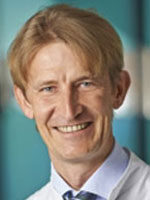
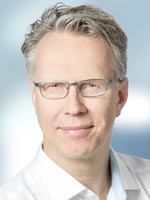
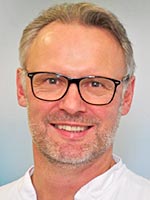
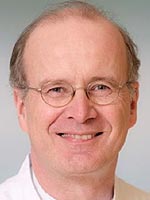

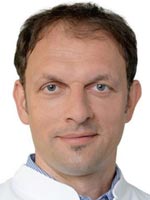

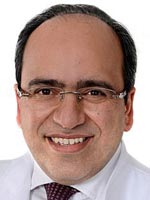


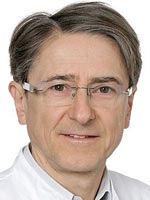

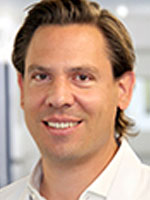





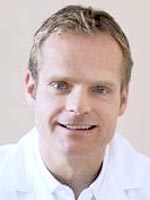
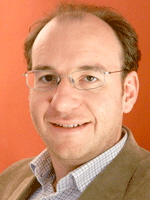
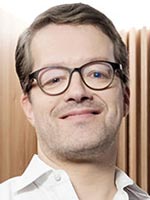
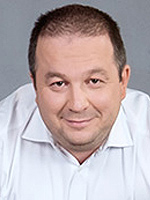
 Loading ...
Loading ...


